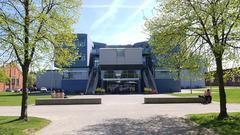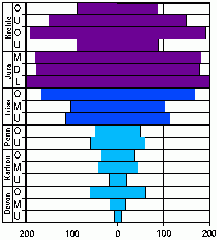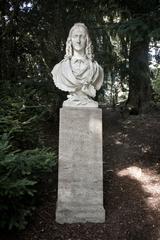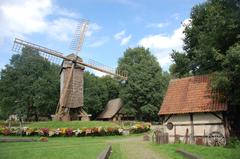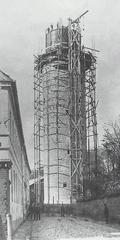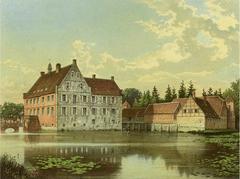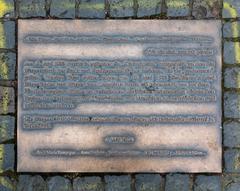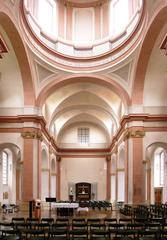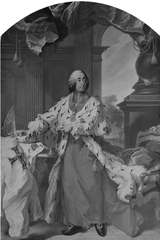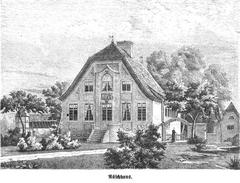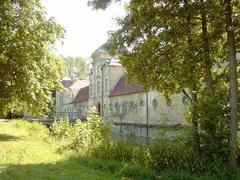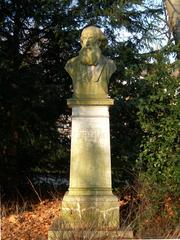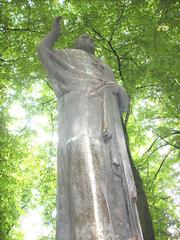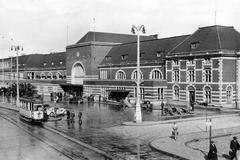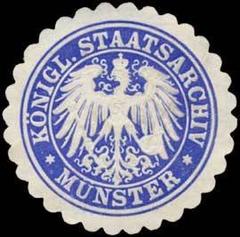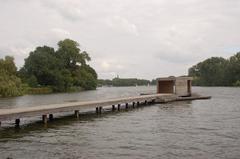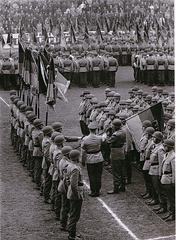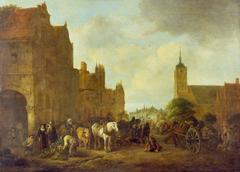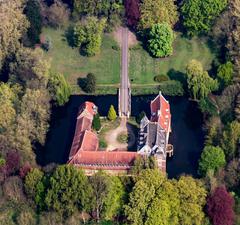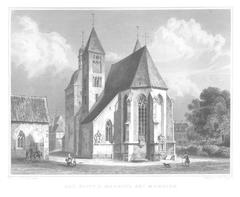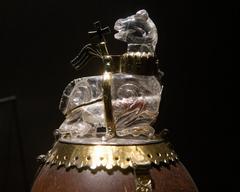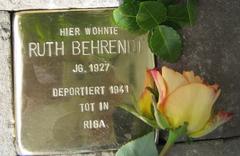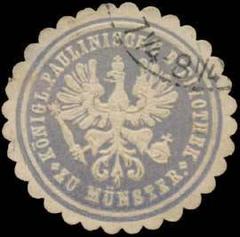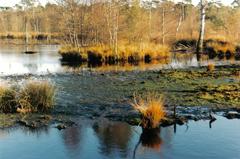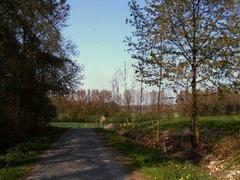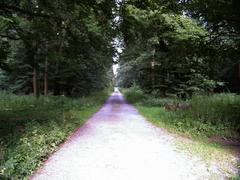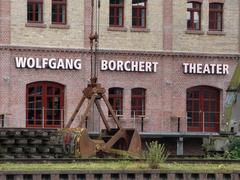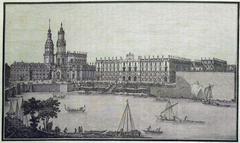Visiting Kiepenkerl in Münster: A Comprehensive Guide
Date: 24/07/2024
Introduction
Münster, Germany, is renowned for its rich historical tapestry and vibrant cultural landscape. At the heart of this charming city stands the Kiepenkerl monument, a tribute to the itinerant traders of the Münsterland region. The Kiepenkerl, depicted in his traditional garb with a large basket on his back, symbolizes the resilience and entrepreneurial spirit that have defined Münster for centuries. This guide delves into the monument’s history, cultural significance, and provides essential information for visitors, including travel tips, nearby attractions, and practical advice for a memorable visit. Whether you are drawn by the historical allure or the cultural experiences that Münster offers, the Kiepenkerl monument is a must-see landmark that encapsulates the essence of this remarkable city. For detailed insights into the history and significance of the Kiepenkerl monument, visit the Wikipedia page.
Table of Contents
History and Significance
Origins and Creation
The Kiepenkerl monument commemorates the traditional itinerant traders of the Münsterland region, characterized by their distinctive attire and large baskets, or ‘Kiepe,’ carried on their backs. Initiated by the Verschönerungsverein (Beautification Society) of Münster in the late 19th century, the statue was sculpted by August Schmiemann and unveiled on October 16, 1896. The 1.75-meter-high statue, initially made of plaster with a galvanic coating, depicts the Kiepenkerl in his typical garb - a linen smock, neckerchief, cap, walking stick, and pipe (Wikipedia).
Wartime Destruction and Post-War Reconstruction
The original statue survived Allied air raids in 1943 but was ultimately destroyed by a tank during the U.S. Army’s advance into Münster at the end of World War II. Post-war efforts led by the Niederdeutsche Bühne Münster (Low German Stage Münster) saw the commissioning of Albert Mazzotti Jr. to recreate the statue in bronze. The new statue was unveiled on September 20, 1953, by Federal President Theodor Heuss (Wikipedia).
Cultural Impact and Modern Relevance
The Kiepenkerl monument symbolizes the resilience and enduring spirit of the local community. It has also gained international recognition, with a stainless steel replica by Jeff Koons now housed at the Hirshhorn Museum in Washington, D.C. (Wikipedia).
The 2018 Incident
On April 7, 2018, the Kiepenkerl monument became the site of a tragic vehicle-ramming attack, resulting in several fatalities and injuries. This incident brought the statue into the international spotlight under somber circumstances (Wikipedia).
Visitor Information
Visiting Hours
The Kiepenkerl monument is accessible to the public at all hours. However, nearby establishments may have specific opening and closing times.
Tickets and Pricing
There is no admission fee to view the Kiepenkerl monument. It is situated in a public space, making it freely accessible to all visitors.
Accessibility
The site is accessible to people of all abilities. The surrounding area is pedestrian-friendly, with well-maintained pathways suitable for wheelchairs and strollers.
Travel Tips
- Best Time to Visit - Early mornings or late afternoons are ideal for avoiding crowds and capturing the best photographs.
- Getting There - The monument is centrally located in Münster, easily reachable by public transport, bicycle, or on foot.
- Nearby Amenities - Restrooms and dining options are available at the nearby Großer Kiepenkerl and Kleiner Kiepenkerl restaurants.
Nearby Attractions
- St. Paul’s Cathedral - A stunning example of Gothic architecture located just a short walk away.
- Prinzipalmarkt - Münster’s historic marketplace, perfect for shopping and dining.
- Münster City Museum - Offers a deep dive into the local history and culture.
- Picasso Museum - The only museum in Germany dedicated primarily to Picasso.
- Aasee Lake - Ideal for a leisurely stroll, boat ride, or picnic.
- St Lambert’s Church - Notable for its Gothic architecture and historical significance.
- City Hall and City Wine House - Key historical buildings associated with the Peace of Westphalia negotiations.
FAQ Section
Q: What are the visiting hours for the Kiepenkerl monument?
A: The monument is accessible 24/7 as it is located in a public space.
Q: Are there guided tours available?
A: While there are no specific guided tours for the monument, many city tours include it as a point of interest.
Q: What are the ticket prices for visiting the Kiepenkerl monument?
A: There are no tickets required to visit the Kiepenkerl monument as it is located in a public space.
Q: What are some nearby attractions?
A: Nearby attractions include Prinzipalmarkt, St. Paul’s Cathedral, Picasso Museum, Aasee Lake, St Lambert’s Church, and the City Hall and City Wine House.
Conclusion
The Kiepenkerl monument in Münster stands not only as a historical emblem but also as a testament to the enduring spirit and cultural identity of the local community. From its origins in the late 19th century to its reconstruction post-World War II, and even its role in the tragic events of 2018, the Kiepenkerl continues to be a significant symbol for both locals and visitors alike. The monument is freely accessible, making it an inviting site for all travelers. Moreover, its proximity to other notable attractions such as St. Paul’s Cathedral, Prinzipalmarkt, and the Picasso Museum, ensures that your visit to Münster will be rich with explorations and discoveries. By visiting the Kiepenkerl monument, you are not just witnessing a piece of history, but you are also engaging with the living cultural heritage of Münster. For more travel tips and detailed guides, don’t forget to download our mobile app Audiala and follow us on social media for the latest updates.
References
- Kiepenkerl (Münster) - Wikipedia (n.d.). Retrieved from https://de.wikipedia.org/wiki/Kiepenkerl_(Münster)
- Travel on the Brain (n.d.). Itinerary for Münster, Germany. Retrieved from https://www.travelonthebrain.net/itinerary-munster-germany/
- Germany Footsteps (n.d.). Best time to visit Germany. Retrieved from https://germanyfootsteps.com/best-time-to-visit-germany/
- Stadt Münster (n.d.). Places of interest: The Old Town/Kiepenkerl. Retrieved from https://www.stadt-muenster.de/en/tourismus/places-of-interest/the-old-town/kiepenkerl
- Travel In Culture (n.d.). Things to do in Münster, Germany. Retrieved from https://travelinculture.com/things-to-do-in-munster-germany/
- In Germany (n.d.). Kiepenkerl Statue. Retrieved from https://ingermany.wiki/munster/kiepenkerl-statue/
- GPSmyCity (n.d.). Attractions: Kiepenkerl Denkmal. Retrieved from https://www.gpsmycity.com/attractions/kiepenkerl-denkmal-(traveling-merchant-statue)-60553.html
